IL-23 stimulates epidermal hyperplasia via TNF and IL-20R2-dependent mechanisms with implications for psoriasis pathogenesis
- PMID: 17074928
- PMCID: PMC2118145
- DOI: 10.1084/jem.20060244
IL-23 stimulates epidermal hyperplasia via TNF and IL-20R2-dependent mechanisms with implications for psoriasis pathogenesis
Abstract
Aberrant cytokine expression has been proposed as an underlying cause of psoriasis, although it is unclear which cytokines play critical roles. Interleukin (IL)-23 is expressed in human psoriasis and may be a master regulator cytokine. Direct intradermal administration of IL-23 in mouse skin, but not IL-12, initiates a tumor necrosis factor-dependent, but IL-17A-independent, cascade of events resulting in erythema, mixed dermal infiltrate, and epidermal hyperplasia associated with parakeratosis. IL-23 induced IL-19 and IL-24 expression in mouse skin, and both genes were also elevated in human psoriasis. IL-23-dependent epidermal hyperplasia was observed in IL-19-/- and IL-24-/- mice, but was inhibited in IL-20R2-/- mice. These data implicate IL-23 in the pathogenesis of psoriasis and support IL-20R2 as a novel therapeutic target.
Figures
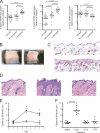
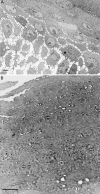

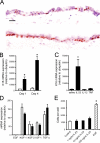
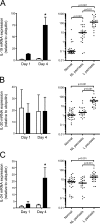
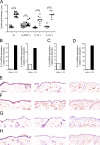
References
-
- Schon, M.P., and W.H. Boehncke. 2005. Psoriasis. N. Engl. J. Med. 352:1899–1912. - PubMed
-
- Bos, J.D., M.A. de Rie, M.B. Teunissen, and G. Piskin. 2005. Psoriasis: dysregulation of innate immunity. Br. J. Dermatol. 152:1098–1107. - PubMed
-
- Nickoloff, B.J., B. Bonish, B.B. Huang, and S.A. Porcelli. 2000. Characterization of a T cell line bearing natural killer receptors and capable of creating psoriasis in a SCID mouse model system. J. Dermatol. Sci. 24:212–225. - PubMed
MeSH terms
Substances
LinkOut - more resources
Full Text Sources
Other Literature Sources
Medical
Molecular Biology Databases

